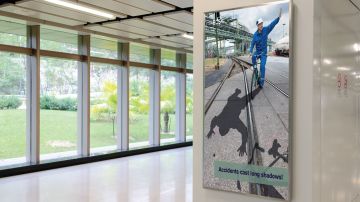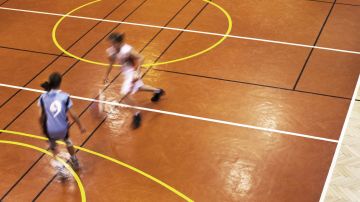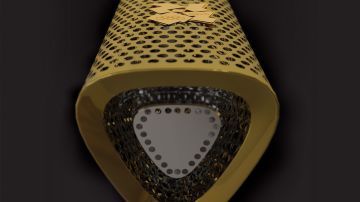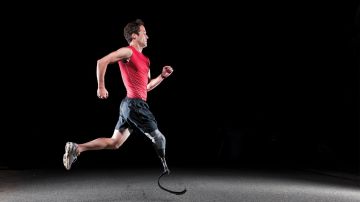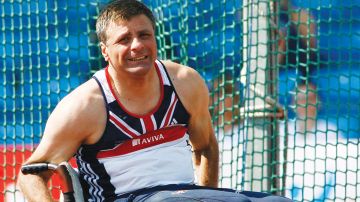INEOS Oligomers produces some amazing materials, including Poly Isobutylene, a phenomenal product with a myriad of uses that most ordinary people would never be aware of. One extraordinary man, who was aware, was Richard Schabel who not only discovered Poly Isobutylene but used it to help him become a world champion.
Paralympian Richard Schabel’s chances of a gold medal literally slipped out of his hands at the Sydney Olympics in 2000.
The British discus thrower, who is unable to grip with his hand, had used a glue-like substance to help him hold on to it until its release.
But the pine resin-type substance he had been using melted in the palm of his hand in the blistering heat.
“It meant the discus was so slippery that I couldn’t grip it,” he said.
Disappointment led him on a quest to find a product that would perform at its best – come rain or shine.
That search led him to Indopol H18000, a product produced by INEOS Oligomers.
“He had already tried a sample of it and knew it worked, but he wanted to speak to the manufacturer to source a larger, regular supply,” said Ian Purvis, account manager INEOS Oligomers.
Ian was happy to oblige.
“We could certainly see why it would work, if not how it would work,” he said. “Indopol H18000 is one of the tackiest products in the market and provides excellent adhesion to almost any surface and its hydrophobic properties means it would not be affected by rain or sweat.”
The product – although not a ‘glue’ in its own right – worked wonders.
“It made a massive difference to my performance,” said Richard who went on to become the world No.1 discus champion.
“It was consistently good, which meant I could train better. And on the day of any competition, it meant it was one less thing for me to worry about.”
But it took time for Richard to perfect his throw using the substance, which he applied to three fingertips and the palm of his hand.
“I have got no control over when the discus is released so if you have got too little on, the discus can slip out of your hand too early,” he said. “And if you put on too much, it comes out too late.”
What helped Richard, though, was that the product retained its tackiness, which meant he just had to work on his timing.
Sadly Richard, who is now 54, will not get to put it to the ultimate test after failing to qualify for the GB squad for this summer’s Paralympics in London.
He’s disappointed but he will be watching from the sidelines.
And having completed the London Marathon four times, he knows the difference a home crowd will make to the British athletes.
“There will be an extra buzz for all of them because they will be competing in front of a home crowd,” he said.
“I remember the noise being deafening in Beijing, so hopefully they will see that too in London.”
Richard, who broke his neck in a car accident when he was 21, had already had a sneak preview of the London 2012 Olympic Stadium.
He – along with scores of athletes – had been invited to take part in a test event inside the 80,000-seater stadium.
Although Richard has not made the GB squad, one who will definitely be watching Britain’s Paralympic discus throwers will be Ian.
“It is a shame that Richard won’t be among them,” said Ian. “But on a personal level, it’s wonderful that we have been able to help Richard.
“And from a business perspective, it’s always fascinating to find new and interesting applications for our products because it helps us to understand how we can help businesses create new products, using our materials.”
Almost 80,000 tons of Poly Isobutylene is produced at INEOS Oligomers’ site in Lavera, France, every year.
It’s known as ‘PIB’ for short and is a clever little chemical that can be found in everything from cosmetics, to ‘blue tack’, to motorbike oil to cling film. It even puts the ‘chew’ in chewing gum.
“There is nothing like it on the market,” said Ian Purvis, Account Manager for INEOS Oligomers, who has been selling PIBs for 11 years. “It is a phenomenal product with a myriad of uses that most ordinary people would never be aware of.”
INEOS provides the chemistry, and different processes are then used in the production activity that results in different grades of Poly Isobutylene. Some emerge as free-flowing oils, some are more sticky with a honey-like consistency and others finish off as very tacky, rubber-like materials.
“All the ‘magic’ basically goes on in the polymerisation phase,” said Ian. Some of INEOS’ biggest customers are film producers (supplying farmers with silage wrap), and producers of adhesives and sealants.
Ian said PIBs had been around for years so it was operating in a mature market where every possible use had, in the most part, been exploited.
That’s one of the reasons why Ian said he was so thrilled to be contacted by Paralympian Richard Schabel.
“Most people who call me for samples are producers,” he said. “It’s rare we get to speak to someone who actually uses the end product.
“Whilst this really is the ultimate niche market, it illustrates well how we work. Listening to stories like this helps us to understand how we can develop new business and create new products using our materials.”





